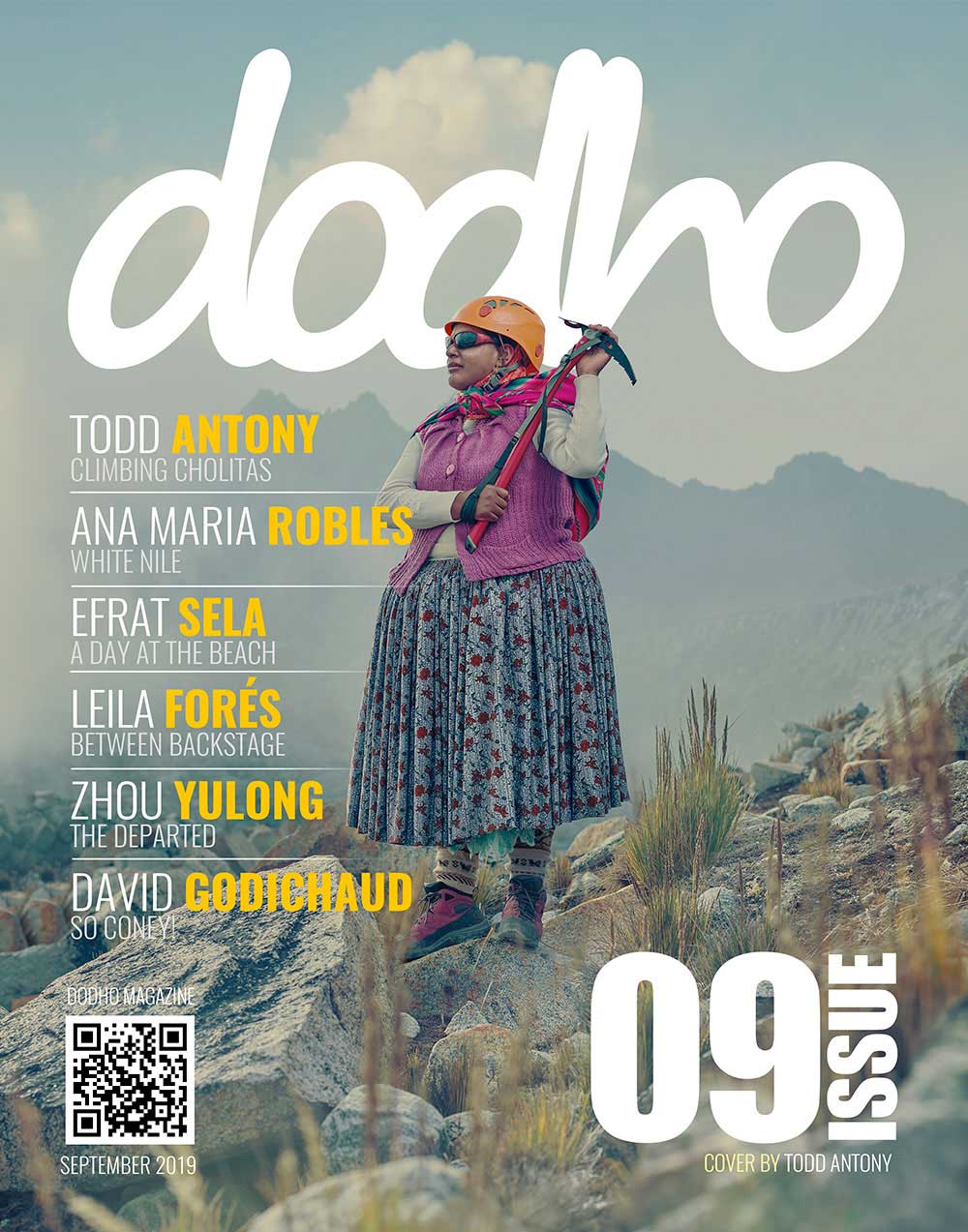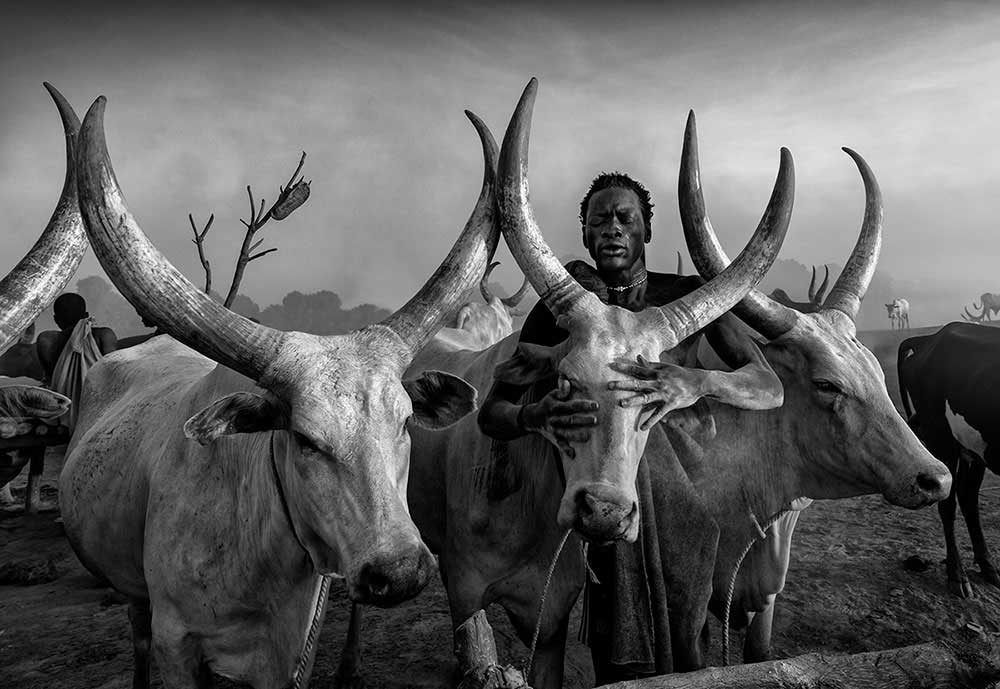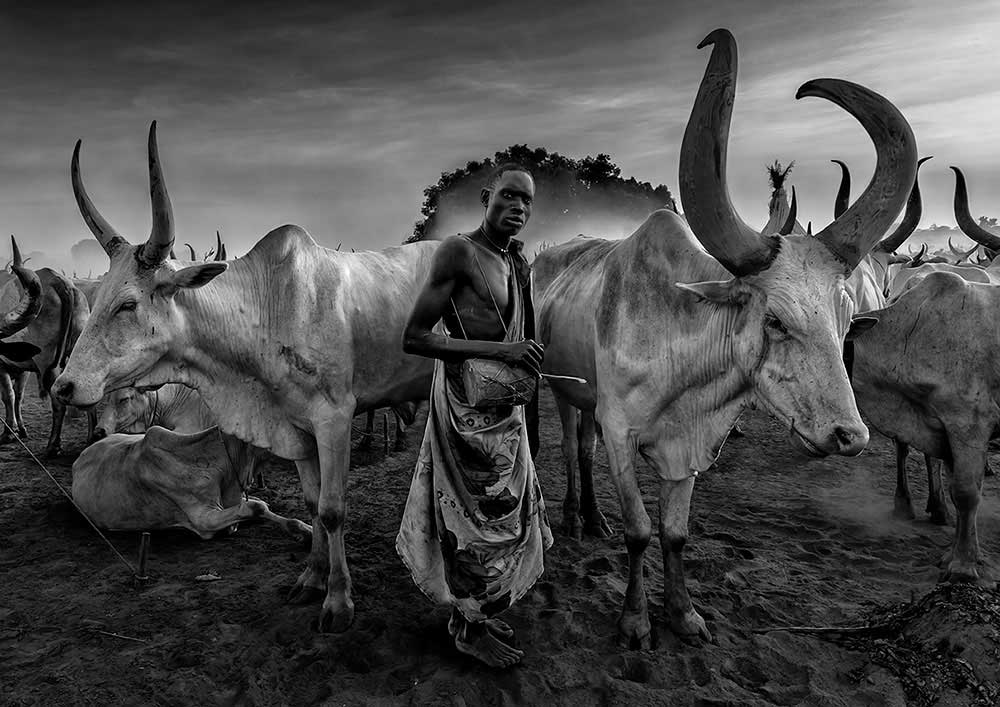 ANA ROBLES SELECTED AND PUBLISHED IN OUR PRINT EDITION 09
ANA ROBLES SELECTED AND PUBLISHED IN OUR PRINT EDITION 09
In a hollowed trunk as a way of the canoe, we cross one of the White Nile branches. Rushing river leaves, among its branches, fertile islands occupied by a community living in subsidiaries sharing everything, utensils, blankets, instruments and collaborating in the ancient daily chores. It is the “Mundari” territory, nomadic shepherds of the Nile.
In the morning, little by little, the cows are released and slowly go to shepherd within the island. The children are those who gathering the manure and lighting the fires. They are born and grow among cattle, feed on their blood and milk, clean themselves with their urine. Early, they are dressed in blankets, covered in ash, grooming.
At dusk, hundreds of Ankole cows return to the camp after grazing, called by the sound of drums. They enter the environment of fog, dust and smoke produced by burning manure fires. Each one has its place, tied to a small stake, they gather around the fire and are meticulously massaged with ashes, including their large antlers, as a protection against insects, in a ceremony of total intimacy with the animal. They are sacred intermediary cows of their Gods and on them depends their livelihood, their social position, their dowry to form a family.
South Sudan, the youngest country in the world, has suffered an endless war since 1956. Since they managed to become independent from Sudan (2011), which was supposed to be a peace process, they have entered a civil war and the tribal rivalries are still deep. Politics seems to maintain this situation, and people die and migrate from one of the poorest and most unstable countries. According to United Nations data, more than two million people have been displaced, and many others have died.
In that environment, I experience unknown realities, not spread, hidden, witnessing the survival of an ancient culture, but threatened by its transformation or disappearance. I here present images of this proud and mostly peaceful people. They allowed me to share their daily lives, permeate myself with their smoke and hospitality.

About Ana María Robles
Thanks to my Mallorcan mother coming to Argentina being very young, I was born here in Buenos Aires, and I have grown up between the countryside and the city. I am a Veterinary Doctor (I love nature in all its forms) and a social psychologist. I am currently practising veterinary medicine, producing medicines for animals and social psychology has helped me to connect with my patients´ owners and with the world. In 2000, I began to study photography, passionate and focused on anthropology and nature.
I have had the opportunity to travel a lot across my country and through the world. (America, Africa, Asia, Oceania and a little bit through Europe) I consider myself a travelling photographer in search of cultures still preserving their traditions, feel pride and have been little modified by our western forms. These cultures are threatened by globalization that is moving very rapidly through these times. I have learned a lot from them. I like to know and be able to show their customs, their ways of relating, their joys and sorrows, which in all cases are those of everyone, only in different environments or realities. In that search, I have also experienced the injustice or impotence pain, but in all circumstances, I try to find beauty.
The moment in which I interact with people from other latitudes and feel we can communicate and respect each other is magical. I’ve always had great experiences because the simplest people open their homes and offer themselves without qualms. I am profoundly grateful to that part of photography. I like the Black and White expression, I like to play with the lights, it gives character to the photographs. I have participated in numerous competitions; I have won international awards and I have exhibited my photographs with great pleasure. During March of this year, I was able to complete the project of touring part of South Sudan, a country devastated by war and the tribal rivalries still persisting. Despite this, numerous tribes resist almost intact as many years ago. I am currently working on this, in contact with representatives of the UN, trying to contribute my experience in support of the long-awaited peace. [Official Website]




















